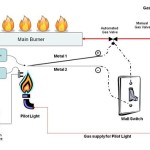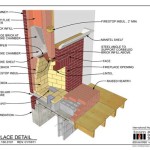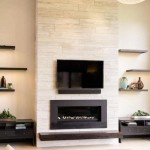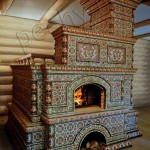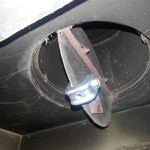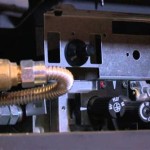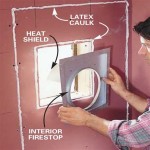Freestanding Woodburning Fireplaces: A Guide to Warmth and Ambiance
A freestanding woodburning fireplace is a classic and timeless addition to any home, offering not only warmth and comfort but also a touch of rustic elegance. These fireplaces, typically constructed from brick, stone, or metal, stand independently in a room, providing a focal point and creating a cozy atmosphere. They are a popular choice for homeowners seeking to enhance their living spaces with the charm of a traditional hearth. This article delves into the benefits, features, and considerations involved in choosing a freestanding woodburning fireplace.
Benefits of Freestanding Woodburning Fireplaces
Freestanding woodburning fireplaces offer a multitude of advantages, making them an appealing option for diverse homeowners. These benefits include:
- Heating Capabilities: Woodburning fireplaces are highly efficient heat sources, radiating warmth into the surrounding space. This can be particularly beneficial in colder climates or for those looking to reduce their reliance on central heating.
- Aesthetic Appeal: Freestanding fireplaces add a distinct character to any room. Their presence can create a sense of warmth, comfort, and sophistication. They can be customized with various materials, finishes, and decorative elements to complement existing decor.
- Cost-Effective: Depending on the availability of firewood, a freestanding woodburning fireplace can be a cost-effective way to heat a home compared to solely using gas or electric heating.
- Environmentally Friendly: By using renewable fuel like wood, freestanding fireplaces contribute to a smaller carbon footprint compared to fossil fuel-powered heating systems.
Features to Consider
When selecting a freestanding woodburning fireplace, it is essential to consider various features that will impact its functionality, aesthetics, and overall effectiveness:
1. Firebox Size and Design
The firebox is the heart of the fireplace, and its size and design directly impact its heat output, fuel consumption, and visual appeal. Larger fireboxes generally accommodate larger logs, increasing the heat output and burning time. The firebox material can range from cast iron, which offers durability and heat retention, to steel, which is lighter and more affordable.
2. Heat Distribution
The design of the fireplace can influence how heat is distributed throughout the room. Some fireplaces feature a built-in blower to circulate warm air. Alternatively, a freestanding fireplace can be combined with a heat-circulating system, directing warm air to specific areas of the house.
3. Chimney Connection
A freestanding woodburning fireplace requires a proper chimney connection to ensure safe and efficient operation. The chimney should be adequately sized and constructed to accommodate the heat and smoke generated by the fire. Chimney connections for freestanding fireplaces can be customized to suit existing structures or new installations.
4. Fuel Type
While wood is the primary fuel source for most freestanding fireplaces, some models are designed to burn other fuels, such as wood pellets or gas. Choosing the right fuel type depends on factors like availability, cost, and environmental considerations.
Considerations Before Installation
Before installing a freestanding woodburning fireplace, several crucial factors should be carefully evaluated.
- Planning and Design: It is essential to plan the location of the fireplace carefully, considering factors like room size, ventilation, and proximity to flammable materials. Seek professional advice for design and placement to ensure compliance with building codes and safety regulations.
- Building Codes and Permits: Contact your local building department to determine the necessary permits and inspections required for installing a freestanding fireplace. They can provide guidelines on specific regulations and requirements related to chimney construction, firebox size, and overall installation.
- Professional Installation: Installing a freestanding woodburning fireplace is a complex task that requires specialized skills and expertise. It is highly recommended to hire a qualified and experienced professional for installation.
- Maintenance and Safety: Regular maintenance is crucial for ensuring the safe and efficient operation of a freestanding fireplace. This includes inspecting the chimney, cleaning the firebox, and ensuring proper ventilation. Adhere to safety practices when using the fireplace, such as keeping flammable materials away from the hearth and never leaving a fire unattended.
Freestanding woodburning fireplaces offer a unique blend of warmth, ambiance, and charm. With careful consideration of design elements, installation considerations, and maintenance practices, these fireplaces can provide years of enjoyment and comfort in any home. They are a testament to the enduring appeal of traditional hearth fireplaces, offering a connection to the past while providing a contemporary and inviting focal point in today's homes.

Studio 2 Freestanding Wood Burning Stove Stovax Stoves

Freestanding Wood Burning Stoves Sierra Hearth And Home
Dru Fire
Dru Fire
Dru Fire

How To Buy A Wood Stove Buyer S Guide From Regency

Studio 1 Freestanding Wood Burning Stove Stovax Stoves

What Is A Freestanding Wood Stove Fireplace Service Experts

Studio 3 Freestanding Wood Burning Stove
Dru Fire

